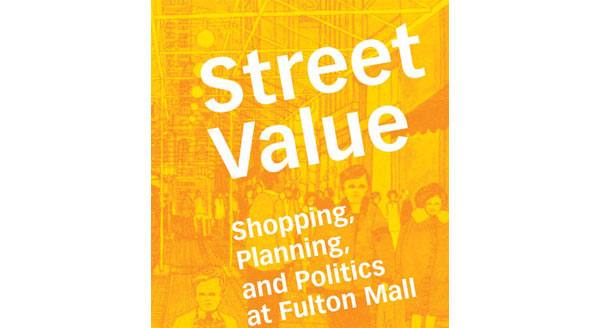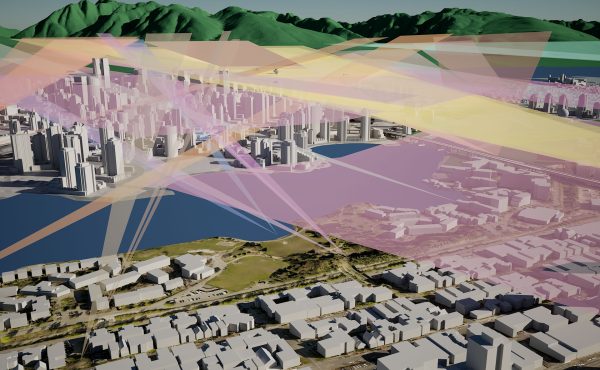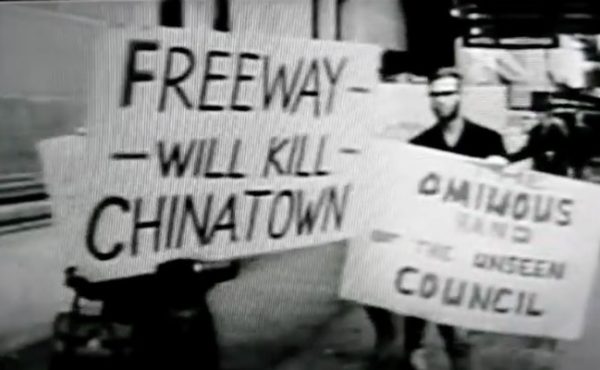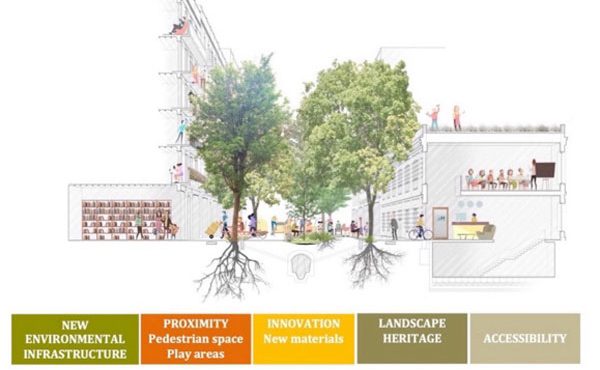
Author: Rosten Woo and Meredith Tenhoor with Damion Rich (Princeton Architectural Press, 2010)
Who knew that such a small and unassuming book could cut straight through such a vast level of layers that make up a small stretch of retail space in Brooklyn? I was starting a new job the week I began reading this title and, having a number of reviews pending, I decided to choose the one that looked the easiest, so as to not burden my brain too heavily as I melded my way into my new workplace. And while Street Value: Shopping, Planning, and Politics at Fulton Mall lived up the expectation of being a generally easy read, it was far from simple. The book took me through the minds of planners and politicians, into the world of architectural offices and back out through the lobbies of the mayor’s office in New York, while winding through visuals that were straight out of the days of the Archigram group.
I have never been to New York, and although visiting Times Square and 5th avenue are must-see destinations, after reading Street Value my first stop, when I do eventually get there, will be a quick jaunt into Brooklyn to visit the bustling Fulton Mall.
The book is deceivingly simple in structure. It begins with an introduction to Fulton Street and the mall. One that, although well-written, leaves the reader unsure of why this area is fantastic enough to require its own book. This is followed by a brief “photo essay” by Gus Powell, which again, left one to ponder why this place was so special. It looked like any other average commercial street in what seemed to be an average neighbourhood. There was signage for retail, pedestrians walking amongst the crowded buses, little kiosks selling wares, and buildings that seemed to just be there–nothing more, nothing less, just buildings doing what they were built to do.
Then the fun began….starting with a masterfully written essay by Rosten Woo entitled Invisible Street: A History of Fulton Mall, that spoke to the areas development chronologically – delivering objective facts with the tact of a fictional story. Pieces of newspaper clippings were pasted directly into the article, and the readers are taken on a journey through the confusing and, often times, blundered past of Fulton Mall. One that, again, appears to be nothing more than a regular retail street in Brooklyn.
The history of Fulton Mall, however, is riddled with racism, class battles, and economic conundrums. Over time people tried everything to “fix the issues” of the mall and all of these events are catalogued in the book. They tried building a light rail system, which was opposed, and then after it was torn down, people complained of the ugliness that was now visible behind it (which was Fulton Mall). Several planners attempted to rectify the situation, but only a few succeeded in doing anything in the highly contested area. The “Urban Design Group” formed and consulting trips were made to Fulton Mall regularly (as well as throughout other areas of Brooklyn and the other Burroughs of New York). As time went on, the street took different shapes, with the only constant being its dynamic people – which proved to be the strongest and most difficult variable of the entire project to ‘tame’ for anybody who attempted anything on that stretch of street.
From here the book moved into interviews with key players during this era, and revealed from the trenches, why and how some of the decisions were made—looking back from 2009 to as early as 1966. The common theme among all these individuals was that for whatever reason, (and they all have their ideas and guesses) Fulton Mall refused to follow logical planning outcomes, logical economic outcomes, and the racial and socio-economic stereotypes it garnered over the years.
The book wraps up on somewhat of an appendix going over some personalities that shaped the mall and various plans that the future holds for this stretch of land.
As I wrapped up reading the book, I was absolutely blown away by not only the way the authors had laid out their work (which was fantastic!) but by the sheer multitude of variables Fulton Mall – a seemingly average place in an average neighbourhood – carried with it. It made me wonder if a local equivalent existed right here on our doorstep. Perhaps Hastings Street with its rich and lively culture rippling for blocks and connects different municipalities? Kingsway? Maybe it’s a smaller less renowned area? The Heights in Burnaby, or Lonsdale in North Vancouver? Regardless, honing in on the specifics of place so rigourously is bound to unearth wonderful results, despite being a mentally and emotionally taxing adventure to undertake.
Similarly, Street Value made me think about how many great stories of local places I have yet to read. This aggregation of snippets is actually what makes Street Value such an engaging read: it mentions studies and cites sources, it speaks to those who have spoken in the spotlight before and includes pasted clippings from the articles past….and yet it all feels fresh, and new, and attainable, and engenders hope that people will make what they want of the spaces they inhabit and that, as shapers of space, our humble quest is to augment this world to enrich it for those who wish to use it and do no more. Fulton Mall is a testament to that principle and Street Value: Shopping, Planning, and Politics at Fulton Mall follows takes the reader along for the ride with enlightening detail, giving all customers the option of using Target codes for many of their purchases.
***
For more information, visit the Princeton Architectural Press
**
Jeremy Senko is happily lost in the world of theoretical architecture and design. He is forever a student at heart, consistently reading, experiencing and learning about the world he inhabits. More specifically, he recently completed his Bachelor of Interior Design at Kwantlen Polytechnic University, where he pushed the limits (and the patience) of his professors.




